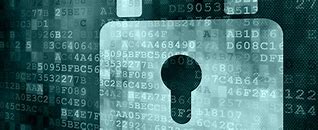” The free email certificates guarantee information protection by making sure the emails users send are encrypted beforehand. Since the certificates provide encryption of up to 256 bit security, security is tight. The sender will also affix their signature on the message to show authenticity.”
Here are all steps how to get the free S/MIME email certificate that you can use to sign your email in Outlook email client or on your mobile devices.
- Go to this URL and register to receive your certificate : Welcome to Actalis Service Portal
- Click Send Verification Email
- Go to email and find the received email with verification code
- Do not worry, the email is in ITALIAN but scroll down and there ENGLISH version
- Once you have the code, go back to the portal
- Enter the received code to verify your email address
- Agree to receive the S/MIME certificate as well as to the Terms and Conditions
- Click on Submit Request
- Stay on the page and make sure you make a note of the one time provided PASSWORD
- Copy the password and save on safe place
- Shortly you should receive email again ITALIAN/ENGLISH with attached certificate in pkcs12 format
- Download the certificate file on your desktop
Good video steps — you can follow step by step in this YouTube video
Add the Certificate into your Outlook:
- Launch Outlook and select File > Options in the main menu.
- Select Trust Center > Trust Center Settings…
- Select Email Security and click the Import/Export button to import the S/MIME certificate.
- Browse to the S/MIME certificate file location in your computer.
- Note that the S/MIME certificate bundle is also referred to in Outlook as a Digital ID or Security Profile.
- Locate the Security Profile (i.e. S/MIME certificate) to import to Outlook.
- Enter the password associated with the S/MIME certificate. If you obtained the certificate as a .p12 or .pfx file from a certificate authority, they must have also given you the password.
- The certificate’s private key was encrypted with the password, so if you lost it, you won’t be able to import the certificate into Outlook.
- Unless you need enhanced security, leave the security level set to Medium and tap OK on the pop-up dialog box.
- Allow protected access to your S/MIME certificate’s private key.
Turn On S/MIME Signing and Encryption
We’re now going to set up Outlook to digitally sign outgoing mail with the new S/MIME identity. This will allow our email contacts with a S/MIME-compatible email software to:
- Authenticate messages we send them
- Automatically import our public key so they can use it in the future to send us encrypted emails.
- Click the Settings button, under Encrypted email.
- Name your security settings and make sure Cryptography format is set to S/MIME.
- Check Default Security Settings for this cryptographic format
- Check Security Settings for all cryptographic messages
Signing Certificate
- Click Choose… to browse to the S/MIME certificate file and and click OK to confirm.
Encryption Certificate
- Click Choose… to browse to the S/MIME certificate file and confirm.
- Finally, check Send these certificates with signed messages

Encrypted Email Settings
- Go back to the Email Security tab and set the default options for S/MIME email as below.
- Check Encrypt contents and attachments for outgoing messages
- Check Add digital signature to outgoing messages
You should now be able to send emails digitally signed with your S/MIME identity and receive encrypted emails. Outlook should automatically import the S/MIME public key of anyone who sends you a signed email, so you should also be able to send encrypted messages to anyone who has sent you a signed message before.
